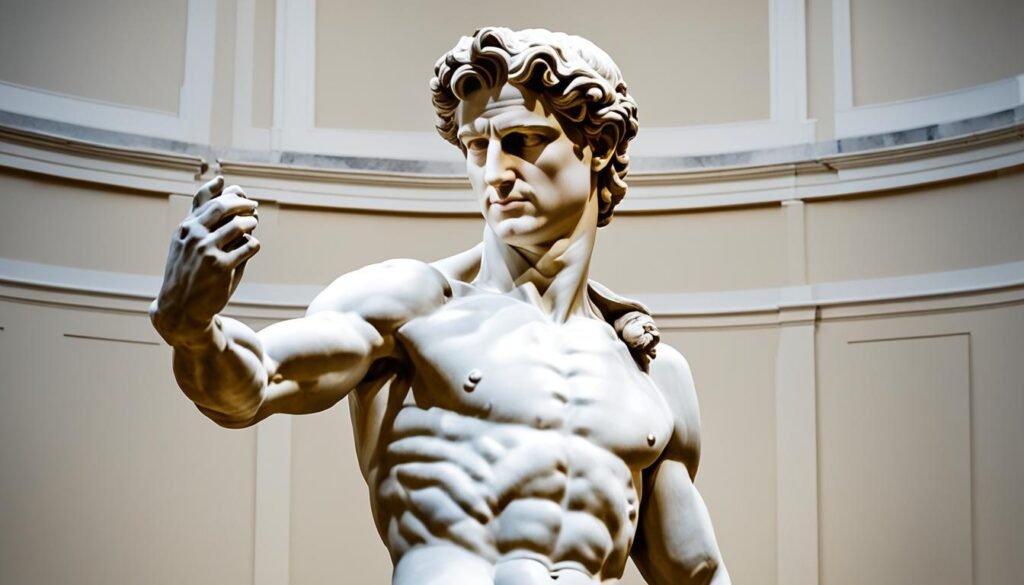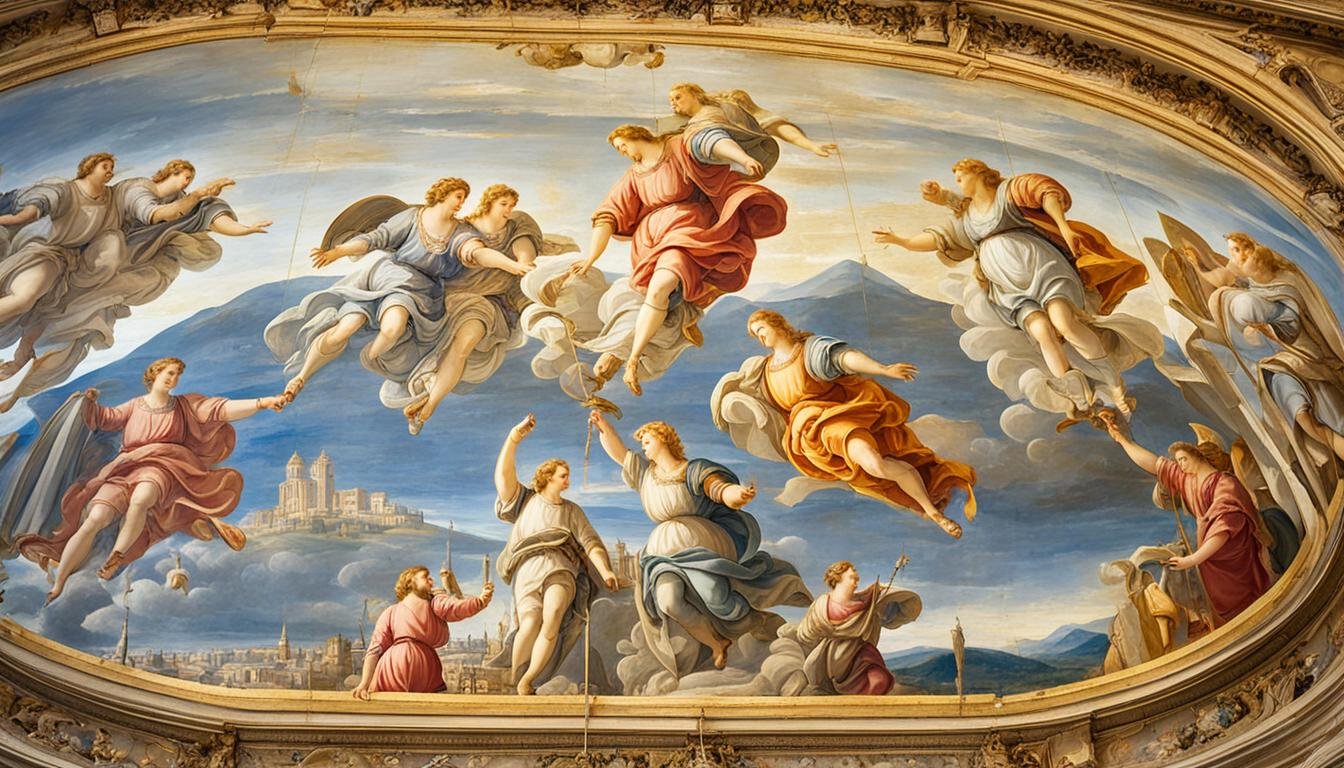Imagine stepping into a world where masterpieces from the Italian Renaissance era are meticulously restored to their former glory. This is the reality in Florence, Italy, where the city’s rich artistic heritage has become a global center for cultural heritage preservation. According to a recent UNESCO report, Florence is home to over 60% of the world’s most significant Renaissance artworks, making it a veritable treasure trove for art enthusiasts and historians alike.
Key Takeaways
- Florence is the epicenter of Renaissance art, housing over 60% of the world’s most significant Renaissance artworks.
- The city’s art preservation efforts gained global attention after the devastating 1966 flood, which spurred the creation of specialized restoration centers.
- The Opificio delle Pietre Dure (OPD) is a renowned institution at the forefront of Renaissance art restoration in Florence.
- Restorers at the OPD are tackling the immense task of preserving iconic masterpieces like Giorgio Vasari’s “Last Supper” painting.
- Florence’s rich artistic legacy and its commitment to cultural heritage preservation make it a mecca for art enthusiasts and historians worldwide.
The Birth of Art Restoration in Florence
The city of Florence, known as the cradle of the Renaissance, has long been a hub for the preservation and restoration of priceless artworks. This legacy was cemented in the aftermath of the devastating 1966 flood, which submerged countless renaissance art restoration florence italy masterpieces in murky waters. In the wake of this disaster, a group of dedicated scholars, art students, and Italian artisans, dubbed the “Mud Angels,” rallied to the city’s aid, embarking on an arduous journey to salvage and restore the damaged Renaissance artworks.
The 1966 flood highlighted the critical need for specialized art restoration techniques in Florence. The “Mud Angels” worked tirelessly, employing their expertise to painstakingly clean, conserve, and revive the flood-ravaged works of art. This pivotal moment in history not only showcased the resilience and skill of these art restoration pioneers but also laid the foundation for the city’s enduring reputation as a global center for the preservation of Renaissance masterpieces.
The 1966 Flood and the “Mud Angels”
The 1966 flood in Florence has become a watershed moment in the history of art restoration. As the waters receded, the city’s cultural heritage lay in ruins, with countless Renaissance artworks and manuscripts submerged and damaged. It was in this dire situation that the “Mud Angels” emerged, a dedicated team of scholars, students, and Italian artisans who answered the call to action, determined to salvage the city’s artistic treasures.
The restoration efforts spearheaded by the “Mud Angels” were nothing short of heroic. Working tirelessly in the aftermath of the flood, they employed innovative art restoration techniques to clean, conserve, and revive the damaged Renaissance artworks. Their dedication and expertise played a crucial role in preserving the city’s cultural legacy, and their legacy continues to inspire art restoration professionals around the world.
The Opificio delle Pietre Dure (OPD)
The Opificio delle Pietre Dure (OPD), or the Workshop of Semi-Precious Stones, is a renowned institution in Florence’s rich art restoration heritage. Established as a Medici family project to create exquisite mosaic works, the OPD has since evolved to focus on the conservation of priceless artworks, employing the latest technologies and techniques.
As a crucial custodian of Florence’s cultural legacy, the OPD plays a pivotal role in preserving the city’s renaissance art restoration. The skilled Italian artisans at the OPD utilize advanced art restoration techniques to meticulously restore and conserve the masterpieces that have graced the city for centuries. From the remarkable renaissance art restoration efforts following the devastating 1966 flood to the ongoing preservation of iconic works, the OPD’s expertise has been instrumental in safeguarding Florence’s artistic treasures.

Today, the Opificio delle Pietre Dure stands as a testament to Florence’s enduring commitment to its cultural heritage. As the city continues to attract art enthusiasts from around the world, the OPD’s dedication to renaissance art restoration ensures that the timeless beauty of Florence’s artistic legacy will be preserved for generations to come.
Restoring the Masterpieces
The Opificio delle Pietre Dure (OPD) in Florence, Italy, has long been at the forefront of preserving the country’s renowned renaissance art restoration florence italy. This prestigious institution, home to a team of skilled Italian artisans, has undertaken the painstaking task of restoring some of the most iconic Renaissance artworks in the world.
The Vasari Restoration Project
One of the OPD’s most significant undertakings is the restoration of Giorgio Vasari’s “Last Supper,” a 21-foot wood panel painting completed in 1546. The painting, which was severely damaged during the devastating 1966 flood in Florence, sat in storage for over four decades as conservators and restorers debated the best course of action. Now, as the 50th anniversary of the flood approaches, the OPD’s team of skilled artisans are working tirelessly to bring this Vasari masterpiece back to its former glory.
The restoration process is a delicate and meticulous one, requiring the utmost care and attention to detail from the OPD’s team of experienced professionals. Through their expertise and dedication, they aim to preserve the integrity of Vasari’s vision and return this Renaissance treasure to its rightful place in the Santa Croce museum, where it can be admired by art enthusiasts and scholars alike.
Uncovering the Lost Legacies of Female Artists
In the heart of Florence, Italy, a remarkable story of art restoration and the rediscovery of female artists is unfolding. Thanks to the efforts of American philanthropist Jane Fortune and her organization, Advancing Women Artists (AWA), the lost legacies of these talented women are finally being brought to light.
AWA has been dedicated to restoring and showcasing the artworks of Florence’s forgotten female artists. Through their tireless work, over 53 artworks have been painstakingly restored, each one a testament to the skill and creativity of these remarkable women. One such artist is Plautilla Nelli, a 16th-century nun and self-taught painter whose stunning 21-foot-long “Last Supper” painting is currently undergoing restoration before being displayed for the first time in centuries.
The renaissance art restoration efforts in Florence, Italy have not only preserved these masterpieces but also shined a spotlight on the contributions of female artists throughout history. By uncovering the lost legacies of these talented individuals, the Advancing Women Artists (AWA) organization is ensuring that their impact on the artistic landscape of Florence and beyond is finally recognized and celebrated.

As the restoration work continues, the public eagerly awaits the opportunity to witness these forgotten treasures and to gain a deeper appreciation for the rich artistic heritage of the renaissance art restoration in Florence, Italy. The journey of rediscovery and the celebration of female artists in this historic city is a testament to the power of perseverance and the enduring impact of art.
Italy: Renaissance art restoration Florence Italy
Florence, the cradle of the Renaissance, has long been a center for the restoration and preservation of its cultural heritage. The city’s rich artistic legacy has been shaped by a series of historical events, most notably the devastating 1966 flood, which left many of its iconic artworks in dire need of restoration. In the aftermath of this disaster, a dedicated team of “Mud Angels” emerged, working tirelessly to salvage and restore the city’s treasures.
The Opificio delle Pietre Dure (OPD), a renowned institution specializing in the restoration of Renaissance art, has played a pivotal role in the ongoing efforts to preserve Florence’s cultural legacy. Through meticulous fresco conservation techniques and the application of cutting-edge technology, the OPD has been able to breathe new life into many of the city’s masterpieces, ensuring their continued enjoyment for generations to come.
The city’s commitment to cultural heritage preservation extends beyond the work of the OPD, with organizations like the American-based World Monuments Fund (WMF) also playing a crucial role in the restoration of iconic artworks. Through collaboration with local institutions and the application of innovative conservation methods, these organizations have helped to safeguard Florence’s artistic legacy, cementing its status as a global leader in the field of renaissance art restoration.
The Medici Dynasty’s Influence
The Medici family, a powerful dynasty that ruled Florence during the Renaissance era, played a pivotal role in the city’s artistic and cultural development. The Opificio delle Pietre Dure (OPD), the renowned institute for art restoration in Florence, was originally founded as a project of the Medici family, aimed at creating the finest mosaic works. The Medici family’s influence extended far beyond the establishment of the OPD, as they were renowned patrons of the arts, commissioning and supporting the work of many renowned artists during the Renaissance period.
Patrons of the Arts
The Medici dynasty’s patronage of the arts was instrumental in shaping the artistic landscape of renaissance art restoration florence italy. The family’s support and commission of works by some of the most celebrated artists of the time, such as Michelangelo, Botticelli, and Leonardo da Vinci, helped to cement Florence’s reputation as a hub of renaissance art and culture. The Medici family’s enduring legacy as patrons of the arts has had a lasting impact on the city’s artistic heritage, which continues to be celebrated and preserved through the efforts of institutions like the OPD.

Fresco Conservation Techniques
The restoration and conservation of frescoes, a technique of mural painting executed on wet plaster, is a crucial aspect of renaissance art restoration in Florence, Italy. The Opificio delle Pietre Dure (OPD) and other art conservation institutions in the city have developed specialized techniques and expertise in the preservation of these fragile Renaissance masterpieces, ensuring their longevity for future generations.
Fresco conservation involves delicate and intricate processes to stabilize and protect the painted layers from deterioration. Art restoration experts in Florence utilize a range of techniques, including consolidation, cleaning, and reintegration, to maintain the integrity of these priceless frescoes. The use of specialized materials and methods ensures that the original artistry and historical significance of the works are preserved without compromising their aesthetic appeal.
One of the key challenges in fresco restoration is addressing the effects of environmental factors, such as humidity, temperature, and pollution, which can cause cracking, flaking, and discoloration of the painted surfaces. The OPD’s fresco conservation team employs advanced techniques, like controlled micro-climate systems and targeted cleaning methods, to mitigate these threats and ensure the long-term preservation of the frescoes.
The city of Florence, with its rich artistic heritage and renowned conservation institutions, continues to lead the way in the field of renaissance art restoration, particularly in the preservation of its iconic frescoes. The dedication and expertise of these art restoration professionals ensure that the captivating beauty and historical significance of these Renaissance masterpieces will be enjoyed by generations to come.
Michelangelo’s David and Other Iconic Works
Florence, the birthplace of the Renaissance, is home to some of the world’s most renowned artworks. At the forefront of this cultural legacy stands Michelangelo’s masterpiece, the iconic David sculpture. This towering figure, crafted from flawless marble, has captivated art enthusiasts and scholars alike, serving as a testament to the city’s unwavering commitment to preserving its renaissance art restoration florence italy.

Alongside the David, Florence boasts an array of other Renaissance masterpieces that have undergone meticulous restoration efforts. The work of artists such as Giorgio Vasari and Plautilla Nelli, whose frescos and paintings adorn the city’s historic landmarks, have been meticulously conserved to maintain their original splendor. These restoration projects, led by the renowned Opificio delle Pietre Dure (OPD), have earned Florence its reputation as a global center for renaissance art restoration florence italy.
The preservation of these iconic works is not merely an act of cultural preservation but a testament to the city’s enduring legacy as a hub of artistic excellence. By safeguarding the legacies of Michelangelo, Vasari, and other renowned Renaissance masters, Florence ensures that its reputation as a bastion of renaissance art restoration florence italy continues to captivate and inspire art enthusiasts from around the world.
The Future of Art Restoration in Florence
As the field of renaissance art restoration in Florence, Italy continues to evolve, the city remains at the forefront, embracing emerging technologies and innovative approaches to preserve its cultural heritage. The Opificio delle Pietre Dure (OPD) and other art conservation institutions in Florence are constantly exploring new art restoration techniques to ensure the longevity of Renaissance masterpieces, while also training the next generation of art restorers to carry on this important work.
Emerging Technologies and Approaches
From advanced digital imaging to cutting-edge materials science, the future of art restoration in Florence is poised to unlock new possibilities. Advanced imaging technologies, such as multispectral scanning and 3D modeling, are allowing art conservators to uncover hidden details and document the condition of artworks with unprecedented precision. Meanwhile, breakthroughs in materials science are enabling the development of more stable and reversible restoration treatments, ensuring that the integrity of priceless works is maintained for generations to come.
Alongside these technological advancements, Florence’s art restoration experts are also exploring innovative approaches to their craft. Interdisciplinary collaborations with scientists, engineers, and digital specialists are driving the field forward, as new analytical tools and methodologies are integrated into traditional restoration practices. The result is a dynamic and forward-looking approach to preserving the city’s Renaissance art, one that blends time-honored techniques with cutting-edge innovation.
As Florence continues to lead the way in renaissance art restoration, the city’s commitment to preserving its cultural heritage remains unwavering. By embracing emerging technologies and pioneering new approaches, art conservators in Florence are ensuring that the masterpieces of the past will continue to captivate and inspire audiences for centuries to come.
Conclusion
Florence’s rich history as a center for Renaissance art and its ongoing commitment to art restoration have solidified its reputation as a global leader in the field. From the devastating 1966 flood to the dedicated efforts of institutions like the Opificio delle Pietre Dure (OPD) and organizations such as the American Women’s Association (AWA), the city continues to play a pivotal role in preserving and restoring its cultural heritage for future generations to appreciate and enjoy.
The restoration of iconic masterpieces like Michelangelo’s David and the preservation of frescoes have showcased Florence’s expertise in the field of art conservation. Emerging technologies and innovative approaches have further enhanced the city’s ability to uncover the lost legacies of female artists and safeguard the legacy of the Medici dynasty’s influence on the arts.
As Florence embraces the future of art restoration, its dedication to the preservation of its renaissance art restoration florence italy and cultural heritage preservation remains unwavering. The city’s continued commitment to this vital endeavor ensures that the world’s artistic treasures will be cherished and protected for generations to come.
Source Links
- Friends of Florence – https://www.friendsofflorence.org/
- How a Female-Led Art Restoration Movement in Florence Is Reshaping the Canon | Artnet News – https://news.artnet.com/art-world/advancing-women-artists-1313612
- Photos: Inside the Florence lab saving priceless works of art – https://www.pbs.org/newshour/arts/photos-behind-scenes-worlds-largest-art-restoration-center


